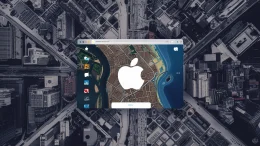Digital transformation encompasses all spheres of life and verticals. While the digital world is increasingly connecting with the real one and new challenges arise. DigitialMara has prepared the observation of emerging tech trends. Among them are industry cloud platforms, autonomous systems, Metaverse, Web3, and multi-experience.
Businesses strive to add sustainability to operational processes and deliver sustainable products and services. According to Gartner, the digital solution can be named sustainable if it brings good environmental, social, and governance outcomes to all market participants. In this case, AI, cloud technologies, and automation will proceed to rock, accompanied by digital twins and 3D printing.
Businesses invest in AI-based products to empower internal and external processes, provide services and improve user experience. IDC estimates expenditures on AI technologies as $500 billion in 2023. Technology helps companies to optimize resilience, scale operations, and leverage data-driven decision-making.
Digital trust is a fundamental part of all financial processes going online. Thus, more businesses and individuals increasingly prefer online transactions. There is a demand for new security measures. A decentralized network developed with Blockchain technologies can be a viable solution. This architectural approach assumes encryption for data transmission and storage and a coordinated form of digital ownership.
Let’s look in more detail at the tech trends that impact production and consumption, development, and perception. Trends are split into three blocks: business solutions, user experience, web, and mobile development.
Business solutions tech trends
-
Autonomous systems
Automation is becoming progressively more popular in various industries and applications as enterprises are going for more rational approaches choosing resilience and efficiency. Autonomous systems can empower most of the processes: increase accuracy and productivity, provide flexibility and data-driven insights, and reduce the time for repetitive tasks.
Their scope of application is wide. They can be used in manufacturing, vehicles, supply chains, delivery, logistics, healthcare, energy solutions, etc.
Autonomous systems have a fairly complex architecture and consist of several components – digital tools. The obligatory requirements are reliability, safety, and real-time control. The main advantage of the systems is the ability to adapt to changing conditions and make decisions independently on large amounts of data.
The data is being collected from AI systems, automated quality management, IoT sensors, drones, enterprise resource planning, customer relationship management, and quality control systems. To develop such a system, you will need a team of data scientists, systems engineers, and programmers.
-
Industry cloud platforms
Moving to the cloud allows companies to be more flexible, scalable, and accelerate processes. Industry cloud platforms or industry clouds are designed specifically to meet the needs of industries such as healthcare, retail, finance, government, and others.
They are a combination of software, platform, and Infrastructure-as-a-service. According to Gartner, more than 50% of core business operations will be conducted using cloud platforms by 2027. Experts believe that this approach goes beyond the traditional cloud and brings extra value to enterprises.
With cloud platforms, one can create an environment in compliance with all security and privacy standards, use predetermined industry scenarios and processes, and handle multilayer tasks. Their tool kit is composed of data models, workflows, and APIs, with the addition of advanced capabilities like AI and ML, IoT, blockchain, AR, and VR capabilities. Enterprise gets the system with greater performance that stands heavy loads and prosses high volumes of data.
-
Platform engineering
Platform engineering aims to increase developers’ productivity, clarify processes, and enhance the experience. And what’s more important is to speed up the delivery of software. Such platforms combine standard toolkits, self-service capabilities, reusable and configurable components and services, and automated processes. The team gets the infrastructure that is centrally managed and enhanced workflows. And the benefit for companies lies in the consistency and efficiency of processes.
In general, the building of the platform covers the following key areas: an internal platform for developers, security of key delivery processes, internal service level agreements, and team performance indicators. However, the platform is not universal and must be adapted to the needs of each organization. The specific functions depend entirely on the requirements of users – developers, data processing specialists, and others.
User experience trends
-
Metaverse
Metaverse is strongly accessioned by Facebook and Mark Zuckerberg, but this notion is much broader. This is a new type of digital interaction with an immersive effect replicating the real world. So that users have a sort of real-life experience in the virtual world. According to Mckinsey’s presentation, there are five basic activities that can be conducted in Metaverse.
They are entertainment, social, gaming, travel, and shopping. It seems to me education can also benefit from this technology. Meetings, conferences, and other events can be held in the Metaverse. Brands can sell their products and launch marketing campaigns. It is possible to carry out training and build digital-twin models.
Metaverse development is a rather laborious process that requires a wide range of technologies and technical requirements. Artificial Intelligence, IoT, Virtual and Augmented reality, 3D modeling, distributed computing, microservices, and edge computing are basic technologies here.
The infrastructure must be stable, and all data must be strictly secured. The system must endure a heavy load and work equally well on different platforms and devices, as thousands of people interact simultaneously and take action from different gadgets.
However, things are going not so bright. Companies invest in the metaverse but don’t always get a return. For example, Meta company, having already invested $100 billion in two years, has lost $3.7 billion in the last few months. Many things have led to this.
Starting from bad-looking avatars and an incomplete environment and ending with a lack of own video games for virtual reality and poor sales of headsets. And don’t forget about reputational losses – low level of trust.
-
AI chatbots
Chatbots can be used much more widely than customer support and sales. AI makes them smart, capable of adapting to the conversation and providing customers with human-like interactions. Depending on the level of complexity of the algorithm embedded in them, they can be used in social apps for fun conversation, therapy apps for primary diagnostics and recommendations, and educational apps to answer general questions and conduct tests.
Chatbots also can assist with the internal processes of the company and become a part of employee services: IT help, employee training, administrative help, HR bots, etc. They can perfectly complement messengers, websites, and applications.
Smart bots are based on Natural Language Processing and Machine Learning models, which are capable of remembering previous conversations and constantly learning and, as an output, show more personalized communication.
You may not be limited to this basic functionality. And add, for example, behavioral analytics to adjust embedded conversation flows or automated translation to make chat multilingual. At the same time, one should keep in mind that customers often share both personal and sensitive information. Therefore, data protection is crucial.
-
Multiexperience
The rising adaptation of voice, wearables, AI, and AR has led to a multi-experience approach, which means creating the same smooth, connective, and engaging experience across multiple digital touchpoints. The user consistently interacts with your software product across websites, mobile apps, voice assistants, chatbots, and various types of wearable devices and manages it with voice, text, and touch.
Multi-experience Development Platforms (MXDP) come to allow you to facilitate the development process and deploy your app on various devices. Gartner defines MXDP as a combination of front-end development tools and “backend for frontend” capabilities to build fit-for-purpose apps that are based on touchpoint-specific modalities. They support iOS and Android development, cross-platform development, responsive and progressive web apps, chatbots, IoT, and AR apps.
-
Voice search
Voice search optimization of our websites and apps should be a part of your strategy, as most modern devices have voice recognition function. Statista claims by 2024, the total number of digital voice assistants will attain 8.3 million. Customers use voice commands not only for smartphones but also for a wide range of smart home devices and smart systems in vehicles. It frees up hands, saves time, and enables multitasking. In general, this is an efficient way to interact with your customers, thanks to a quick reaction to their requests.
Software development trends
-
Web3
Web3 is a relatively new technology. Some see its potential in it, while others have concerns. Ultimately, we can expect this to change the architecture and basic principles of web platforms and how users interact amongst themselves and with the platforms. The innovation of the Web3 approach is that it offers a rejection of centralized systems and intermediaries.
While all interactions are going peer-to-peer. Critics argue that such a system is acceptable for public solutions but not for enterprises. Some examples here are NFTs and play-to-earn games, and decentralized finance.
The technology stack of Web3 development combines the concept of decentralized autonomous organizations (DAO), Blockchain capabilities, and AI adaptive algorithms. Semantic web, cryptocurrency payments, verifiable authenticity, and automation are some key features. At the same time, the emphasis should be placed on ensuring proper cyber hygiene, protection of personal data, and privacy.
-
Low-code (no-code)
Low-code development is gaining more and more popularity. And there are a large number of low-code platforms on the market as an alternative to conventional development. Their principle of operation is based on a “drag-and-drop” interface and pre-configured templates.
One can use web and mobile development, IoT development, testing, workflow automation, AI chatbots, data science, and more. With this approach, you can quickly develop and deploy with minimal resources. It’s a viable option for MVP development if you are a startup.
When working with low-code or no-code, you need to consider several nuances. Choosing a platform, you should keep in mind a wide range of factors. For example, cloud support, integration with existing systems, number of users, collaborative IDEs, multichannel deployment, ability to scale, and more.
Platforms lack customization opportunities and may have technical limitations for modification of your code. In professional hands, low-code is a good instrument, able to save your time and resources and validate your idea.
-
Automation testing
You should consider automation testing as a part of your QA policy, as your software quality is crucial both for internal processes and for the products and services that you are providing to customers. Obviously, various types of malfunctions, failures, freezes, late detection of bugs, and operational errors lead to reputational and financial losses.
Automation provides greater testing coverage and allows handling continuous testing covering all stages of the development process. Automated tests are more accurate, efficient, and reliable and also save time and costs.
The faster you can test and debug, may faster to launch your product. While higher the quality of your software – the higher the customer satisfaction. Creating automated tests is the task of a QA engineer.
And advanced technologies like cloud, artificial intelligence, machine learning, natural language processing, and robotic process automation can help with it and extend the capabilities of the tests. For example, creating multiple testing environments and specific scenarios, emulating real-world conditions, conducting large-scale testing, and more.
Final words
The digital world is continuously evolving as new challenges arise that can be solved with the help of technology. In turn, emerging technologies are also shaping trends. Businesses need to be flexible and adapt to these processes. Investigating and understanding trends enables staying competitive in a rapidly changing market. You can adjust your strategy, explore new growth opportunities and identify areas for investment.
Featured Image Credit: Photo by TH Team; Pexels; Thank you!

















